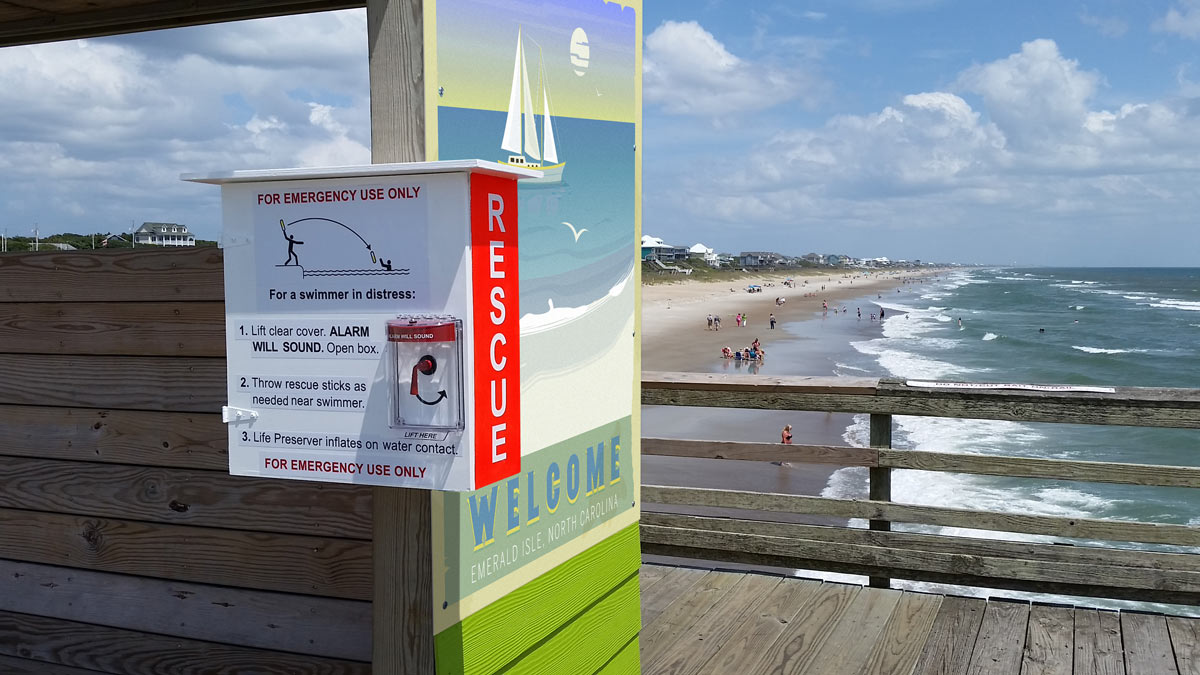A North Carolina lifeguard told me, “A drowning happens fast. A struggling, inexperienced swimmer has only a minute or two before it’s too late.”
Lifeguards can beat that fast-ticking clock, and they routinely do every season hundreds of times across the country. But in swimming areas without lifeguards there is often no realistic chance of rescue. According to the CDC, there are 3,500 non-boating-related drowning deaths in America every year, or about 10 per day — the fifth leading cause of unintended injury death.
Bystanders should always call 911, of course, but many times rescue personnel, hard as they try, cannot get to the scene fast enough. And it’s never a good idea for an untrained bystander to attempt a swimming rescue because statistics show that can easily turn into a double drowning.
Last summer at an ocean beach near where I live, a woman in her forties was suddenly caught in a rip current. All bystanders could do was watch her die. The recorded 911 call was hard to listen to, and right then I vowed to devise a rescue system that could be constantly available at any swimming area and could rival the fast response time of a lifeguard.


The result is the Rescue Box. It’s alarmed against tampering, like a fire alarm, but is quickly and easily accessible by anyone in a potential drowning emergency. It houses three Mustang Rescue Sticks (Figures A and B) which can be thrown — even into a wind — 100 feet or more to reach a distressed swimmer. The foam-padded 15.5oz Stick inflates immediately on water contact, creating a large, bright-yellow, horseshoe-shaped preserver with twice the flotation of a traditional life jacket, which cannot be thrown very far at all.
Mustang Sticks are proven lifesavers for boaters and first responders, but the Rescue Box is a new idea, making the Sticks available to the public wherever and whenever needed. Anyone who has ever thrown a softball, football, or even snowballs, can throw a Stick accurately enough to save a life. Just to be sure, the box holds three Sticks, providing multiple chances to reach a swimmer in trouble.
The Rescue Box is a good public service project for any maker with an unguarded beach or swimming hole nearby. A group like the Explorer Scouts or a community college woodworking class might consider taking on the job with funding from a local civic organization. A brief news item in a local newspaper or on TV will let area swimmers and their friends and families know the box is there and how to use it.
Let’s Save Some Lives
Your Rescue Box can be mounted, centered about head height, on a pier piling or on a 10′ 4×4 treated post dug into the ground. Use two 2½” hanger bolts, with wood-screw thread on one end and ¼-20 machine thread on the other. An easy non-measuring way to mount the box is to drive two nails partway into the post 3″ apart and level. Rest the box temporarily on the nails while you center it on the post and drill two pilot holes for the hanger bolts through the back of the box into the post. Take down the box and remove the nails. Enlarge the holes in the box just enough to clear the hanger bolts. Use two nuts jammed together on the end of the bolts to turn the bolts with a wrench and screw them into the pole. Remove the jam nuts, hang the box on the bolts, and secure it with 1½” washers, lock washers, and nuts.
Remove the Mustang Rescue Sticks from their clear protective plastic bags before placing them in the box. Close the box door, remove the stopper alarm pin to arm it, close the clear stopper cover, and the box will stand ready for fast access to save a life.

The First Test Boxes
I installed two Rescue Boxes (the first of their kind in the world) on the Bogue Inlet Pier at Emerald Isle, North Carolina, last season for testing. The pier owners, local swimmers, and fire and rescue people welcomed the idea, and the pier will continue to use the boxes, one mounted above on the pier boardwalk (Figure J), and one below on a pier piling adjacent to the popular swimming area (Figure K).


For increased visibility I added a triangular day-glow orange bicycle flag on a fiberglass wand, cut down and mounted to the box back (Figures K and L).
Box Maintenance
The box can be taken down for storage during the winter months in the colder latitudes. The 9V alarm battery should be replaced each swimming season, or a 5-year battery could be used.
Directions for Stick maintenance are included with purchase; they are reusable after inflation with a Re-arm Kit (#MA7206) available online. Using a permanent felt-tipped marker, you might print “Property of [you or your group]” and a phone number on the preserver fabric for return after use. You can also build dummy rescue sticks in order to practice your throwing aim.
Author’s note: Thanks to longtime buddy and frequent Make: contributor Larry Cotton for his help and the generous use of his garage workshop.













